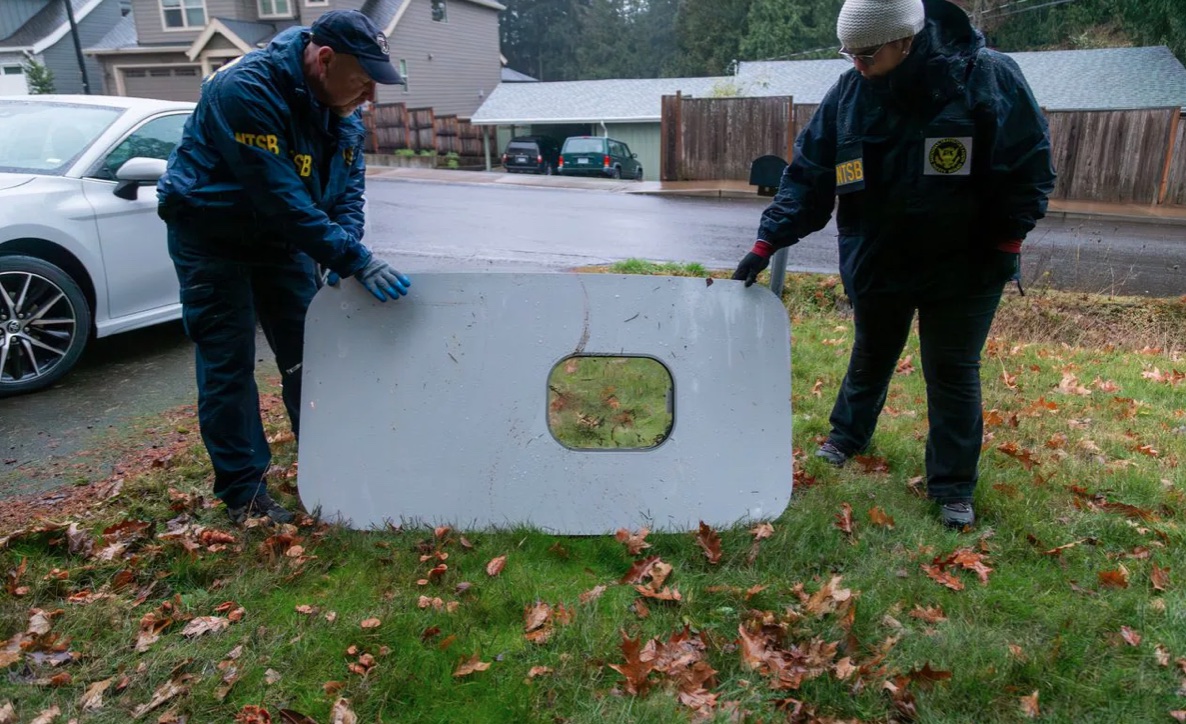Alaska
Alaska, America’s worst state for business, pins hopes on a post-oil boom in carbon offsets

An oil pipeline stretches across the landscape outside Prudhoe Bay in North Slope Borough, Alaska, May 25, 2019.
The Washington Post | The Washington Post | Getty Images
Alaska can be a rugged and unforgiving place, and that’s not just its landscape. Its economy is prone to big booms and wrenching busts. Lately, it has seen more busts.
More than any other state, Alaska is dependent on oil. As much as 85% of the state’s unrestricted general fund revenue comes from oil production, according to state estimates. In some years, it has been well over 90%. But oil production has been in long-term decline in the state, which was once America’s No. 1 producer of crude but has been surpassed by several shale oil boom states, including Texas, New Mexico and North Dakota. Alaska’s crude production in 2022 was roughly equal to that of Oklahoma, and it hit the lowest level since 1976, according to Energy Department data.
This trend helps explain why Alaska’s economy performed worse than any other state last year, according to the Commerce Department, shrinking by 2.4%. And it explains why the Last Frontier finished dead last in CNBC’s 2023 America’s Top States for Business rankings.
In addition to a last-place finish in the Economy category, Alaska ranks 49th in the Infrastructure, Education, and Access to Capital categories. It finished 48th in Cost of Doing Business. This is the seventh time since 2007 that Alaska has finished at the bottom, and the third time in the last five studies.
Alaska’s carbon turnaround plan for the future
Alaska isn’t giving up on crude. Recent approvals such as the controversial Willow Project have led state officials to forecast an increase in production in the years ahead. But Gov. Mike Dunleavy and the state legislature have a plan that they hope will reverse Alaska’s fortunes once and for all, by making the state less susceptible to gyrations in the oil market.
“Alaska was built on a promise that we would be north of the future. That we would be visionary,” Dunleavy, a Republican, said at a news conference May 23.
Dunleavy was marking the signing of SB 48, legislation that officially puts the state in the carbon business.
“Just like oil, just like gas, just like our timber, this is a commodity that can be monetized now,” he said.
The Tongass National Forest on Prince of Wales Island, Alaska, July 2, 2021.
The Washington Post | The Washington Post | Getty Images
Under the new law, Alaska will be able to sell so-called “carbon offset credits,” capitalizing on the state’s vast public forest lands. Companies that emit carbon will be able to buy the credits, effectively paying the state to preserve and protect its forests, thereby canceling out, or offsetting, those emissions.
What the state doesn’t spend on maintaining its forests, it can keep as revenue.
Alaska Natural Resources Commissioner John Boyle, who is working on the rules to implement the program, said in an interview with CNBC that the market for the new credits could be huge as companies discover the limits of carbon reduction technology.
“Across America, and in the rest of the world, you see a number of companies that have set very aggressive net zero (emission) targets for themselves,” he said. “Ultimately, in order for a lot of these companies to be able to hit the targets that they’ve set for themselves, they’re going to need to look for other options for offsets.”
The emissions offset market is growing
Carbon offset programs are already gaining popularity around the world. The California Air Resources Board operates an extensive offset program that the state says is an essential part of its program to reduce greenhouse gas emissions.
When Dunleavy unveiled the legislation in January, he noted that Alaska’s Native Corporations have generated $370 million in revenue selling offset credits since 2019.
The state has not offered any estimates of how much revenue its program could generate, but Boyle said it could begin making money soon.
“I don’t think it’s unfair to say that the state fully anticipates seeing revenue within a relatively short period of time, likely within the next 12 to 18 months,” Boyle said. “We fully expect to see some new revenues coming in as companies acquire our leases and do other things to prepare themselves to develop carbon offset projects.”
Carbon credits are controversial
Alaska is all in on the plan. The bill passed the state Senate unanimously; only two members of the House voted against it.
But outside Alaska, there is no shortage of skepticism.
“Multiple lines of evidence suggest that Alaska’s forest carbon offsets program could produce carbon credits that don’t represent real climate benefits,” wrote Freya Chay and Grayson Badgley of the climate research group CarbonPlan in a commentary published in May.
They note that while the program promises to protect Alaska’s forests and the climate benefits they provide, it also promises not to reduce timber harvests. The researchers said the credits appear to be structured to “simply reward a landowner for doing what they already planned on doing.”
“Although this could be a win for the State budget, it would be a loss for the climate — and for the credibility of the voluntary carbon market,” they wrote.
Boyle argues that the funding from the offset credits will allow the state to manage its forests more effectively and efficiently. That way, he said, the state will eventually have larger forests — with more trees to capture carbon, and more timber left over to harvest.
“That gives you a margin by which, if you choose, you can do some selective timber harvesting, as long as you maintain a level that is appropriate with the baseline that’s been established,” he said.
Carbon credits are just the beginning of Alaska’s plan to transform its economy. Dunleavy has also proposed creating a “carbon sequestration” program, where the state would capture its carbon emissions — or accept shipments of carbon captured elsewhere — and inject them into underground storage beneath Alaska’s huge expanses of open land.
“There’s a real ability here to move the needle in managing the world’s carbon and storing it for geologically significant periods of time,” Boyle said.
They believe that there is also an ability to diversify Alaska’s economy and make it competitive again, while helping the planet at the same time.

Alaska
Latest News Impacts Merger Prospects For Hawaiian/Alaska Airlines

In an airline industry continuing to navigate the turbulent skies of consolidation and mergers, among other even bigger issues, the proposed union between Alaska Airlines and Hawaiian Airlines presents a complex situation that is drawing considerable attention from regulators and industry observers alike. While recent reports from some source want to suggest that the the merger is almost certain, a deeper dive into the circumstances surrounding this potential tie-up reveals a less straightforward path. That in spite of the news this week.
Regulatory scrutiny and historical precedents
The federal government has adopted a strong stance on antitrust enforcement, particularly in the airline sector. This was recently exemplified by the Justice Department’s actions against other airline mergers and partnerships, such as the lawsuit to dissolve the partnership between American and JetBlue, as well as successful efforts that blocked JetBlue’s acquisition of Spirit. Even as many have pointed out significant differences between the proposed Alaska/Hawaiian tie-up and these, this is no slam-dunk. These federal interventions depict a commitment to preventing consolidations perceived as anti-consumer and stifling competition.
The Alaska Airlines/Hawaiian Airlines journey began with their joint announcement at a press conference on December 3, which Beat of Hawaii attended. That set the stage for extensive regulatory review at the hands of the U.S. Department of Justice (DOJ), which commenced its in-depth investigation in February. That scrutiny involves a thorough examination of documents, data and other factors in order to assess the merger’s implications on Hawaii airline market competition.
Compliance and cooperation between Alaska, Hawaiian and regulators.
In an important development this week, the two airlines recently confirmed compliance with a second detailed request for information from the DOJ. That milestone was crucial and has been successfully met according to Alaska and Hawaiian. You’ll recall that the airlines previously agreed to not attempt to finalize their merger until at least 90 days following this event, in cooperation with the ongoing regulatory processes .
Financial and operational plans.
If the merger is allowed to proceed, Alaska Air is set to become the parent company and will be based in Seattle, while both airlines plan on continuing to operate under their existing brands. This arrangement may suggest an important merger success strategy, as we’d indicated, in maintaining each brand and its operations individually. But will that be enough to mitigate government concerns about concentrating the Hawaii airline market?
Analysis and outlook on Hawaiian merger prospects.
Contrary to some more optimistic reports, it appears that the reality reflects that the proposed merger still faces a series of hurdles and uncertainties. The severe regulatory landscape, reflected in the administration’s proactive antitrust stance, suggests that the path to a merger could still be fraught with challenges and delays, both anticipated and not.
As industry observers, we are maintaining a cautious but optimistic outlook on the merger’s prospects. Indeed the timely cooperation between Alaska Airlines, Hawaiian Airlines, and the DOJ is a good sign. Final approval and completion of the merger, however, still hinges on complex regulatory decisions, including how the DOT views the market conditions, and possible strategic concessions that may still be required to address any antitrust concerns. We will know no later than August 5 what the DOJ has in mind for this merger.
Do you have any thoughts on the upcoming Alaska/Hawaiian merger?
Alaska
3 people stabbed on board cruise ship bound for Alaska

The Norwegian Encore cruise ship is seen on April 02, 2020 in Miami Beach, Florida. FILE PHOTO/Agence France-Presse
JUNEAU, Alaska — A cruise ship worker from South Africa was arrested Tuesday in Alaska’s capital city, accused of attacking a woman and two security guards with scissors on board the vessel, according to authorities.
The U.S. attorney’s office says the man is charged with assault with a dangerous weapon within maritime and territorial jurisdiction. Online court records do not show an attorney for the 35-year-old man.
According to an affidavit from FBI Special Agent Matthew Judy, the man was recently hired by a cruise line and joined the ship, the Norwegian Encore, in Seattle on Sunday. The ship set off that day for a weeklong trip with scheduled stops in Alaska ports, including the capital of Juneau, and British Columbia.
READ: Crammed with tourists, Alaska’s capital wonders what will happen as its magnificent glacier recedes
The alleged incident happened west of Vancouver Island, British Columbia, as the ship was sailing to Alaska. According to the affidavit, during the ‘late evening” Sunday, ship personnel saw the man trying to deploy a lifeboat, and he was taken by security to a medical center for an evaluation.
READ: 881 Pinoy crewmen of stricken cruise ships arrive from US
While there, he “became irrational and attempted to leave,” and “physically attacked” a guard and a nurse, the affidavit states. He ran into another room, where he grabbed a pair of scissors and stabbed a woman who was being examined, as well as two guards who tried to intervene before being subdued and held in a “shipboard jail,” the affidavit says. None of the injuries were considered life-threatening.
The ship arrived in Juneau on Tuesday, when he was arrested by the FBI, the U.S. attorney’s office says.
Alaska
HB 111 aims to improve education for deaf and hard of hearing students in Alaska

FAIRBANKS, Alaska (KTVF) – On Monday, The Alaska House of Representatives passed HB 111 which establishes a Deaf and Hard of Hearing Children’s Bill of Rights for the purpose of ensuring access to academic resources.
House Bill 111 addresses the specific educational needs and rights of deaf and hard of hearing children in schools. As stated in a press release Monday, the goal of HB 111 is to allow all students the ability to thrive and part of that involves empowering parents to choose the best method of communication for their child. Thus, requiring the school districts to provide assistance in the chosen communication method.
“Deaf children possess the inherent ability to acquire language and succeed academically, just like their hearing peers,” stated bill sponsor Representative Jamie Allard (R-Eagle River) in a press release.
“This bill guarantees that their rights to communicate and learn are not only recognized but also actively supported by our educational system. I was one of those kids, I understand the need to be treated with equal opportunities.” Allard added.
This bill mandates and ensures that deaf and hard of hearing students can participate in and reap the benefits of all school activities and programs. This will include providing assistive technologies and services for each child to better achieve the individualized education programs.
HB 111 is moving to the Senate for consideration.
Copyright 2024 KTVF. All rights reserved.
-
Movie Reviews1 week ago
Challengers Movie Review
-

 Politics1 week ago
Politics1 week agoHouse Republicans brace for spring legislative sprint with one less GOP vote
-

 World1 week ago
World1 week agoAt least four dead in US after dozens of tornadoes rip through Oklahoma
-

 Politics1 week ago
Politics1 week agoStefanik hits special counsel Jack Smith with ethics complaint, accuses him of election meddling
-

 Politics1 week ago
Politics1 week agoAnti-Trump DA's no-show at debate leaves challenger facing off against empty podium
-

 News1 week ago
News1 week agoAs student protesters get arrested, they risk being banned from campus too
-

 World1 week ago
World1 week agoNine on trial in Germany over alleged far-right coup plot
-

 News1 week ago
News1 week agoVideo: Police Arrest Columbia Protesters Occupying Hamilton Hall


















